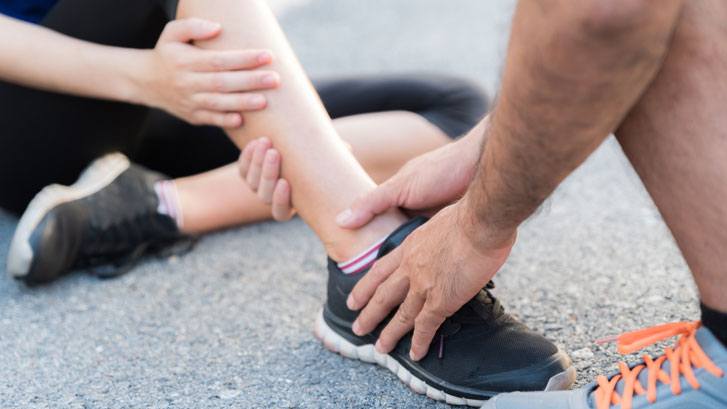May is National Physical Fitness & Sports Month, a time to celebrate and promote healthy living. Regular physical activity reduces the risk of a variety of medical conditions and improves quality of live, but it can also lead to the occasional injury.
One of the most common injuries related to activity is ankle sprain, where the ligaments stretch or tear. In fact, sprains are the most common traumatic condition of the ankle and can cause significant pain and swelling.
For the vast majority of patients, the ankle can heal on its own with one or more of the following:
- a period of rest while avoiding sports or impact activities
- a short period of immobilization in a surgical boot, brace, or bandage
- taking anti-inflammatory medications for a few days, if the pain is particularly severe
An important part of recovery is early weight bearing following the sprain. In fact, walking on the sprained ankle can actually improve recovery and stimulate stronger healing of the injured ligaments and tendons. One important thing to keep in mind is that ankle swelling can last 2-3 months after the injury, even if the pain has completely gone away. Compression socks can alleviate the swelling, but time is the best medicine.
More severe ankle sprains may require additional treatment. Some patients may benefit from physical therapy to help rebuild strength and speed up recovery.
If the pain hasn’t improved after about six weeks of non-operative treatment, an MRI is usually ordered to check for tendon, ligament, bone, or cartilage lesions that might require more specific treatments, including surgery. MRIs are very rarely needed shortly after the injury, as they don’t usually change the treatment plan during the first six weeks.
While ankle sprains don’t usually cause long-term problems, they are painful and inconvenient, and prevention is the best medicine. Before engaging in physical activity, it’s important to warm up properly to avoid injury. It’s also important to wear supportive athletic shoes and work on building core and ankle strength and flexibility.
Mount Sinai’s Columbia University affiliated orthopedics team is highly specialized in sports related injuries, working with each patient to tailor a treatment plan that leads to a positive outcome and a return to physical activity.



